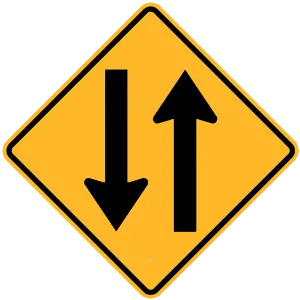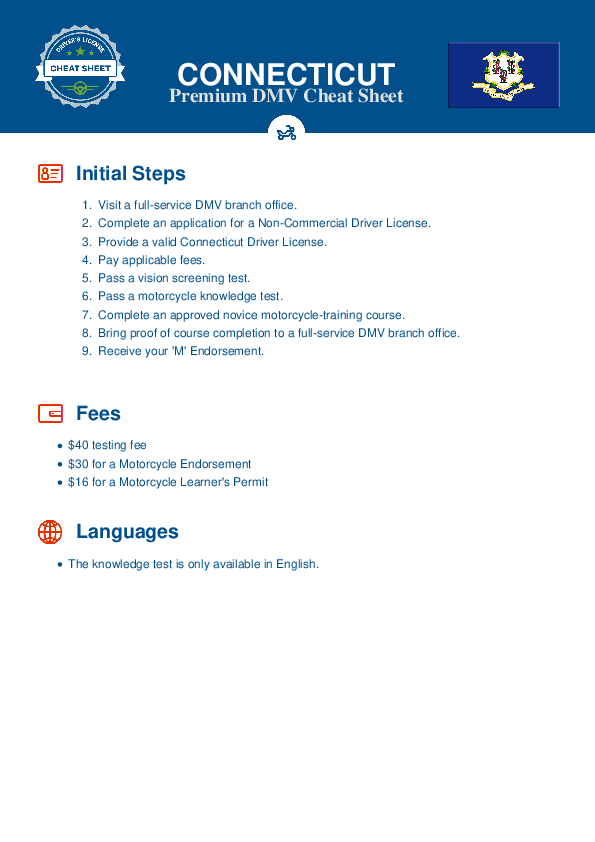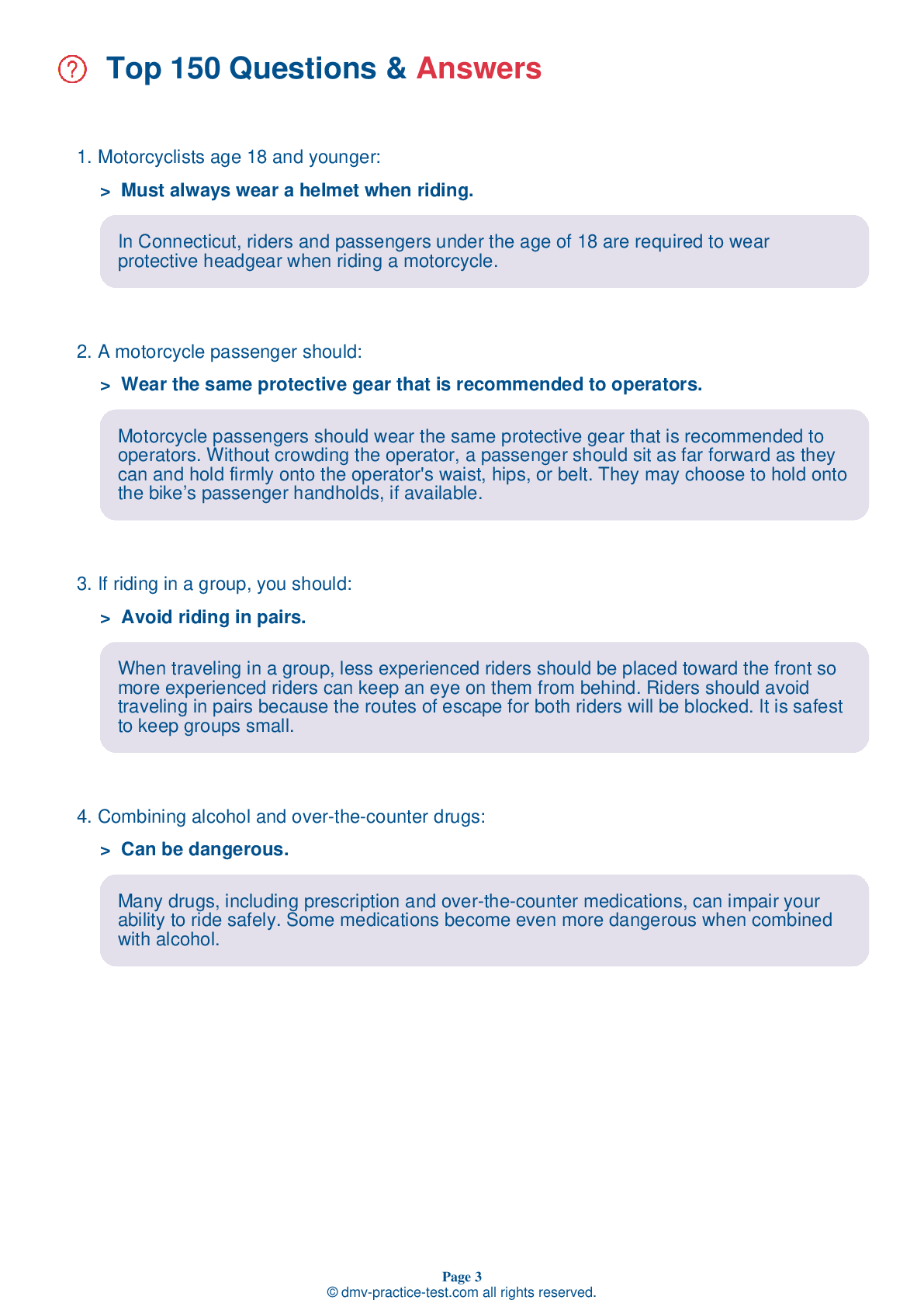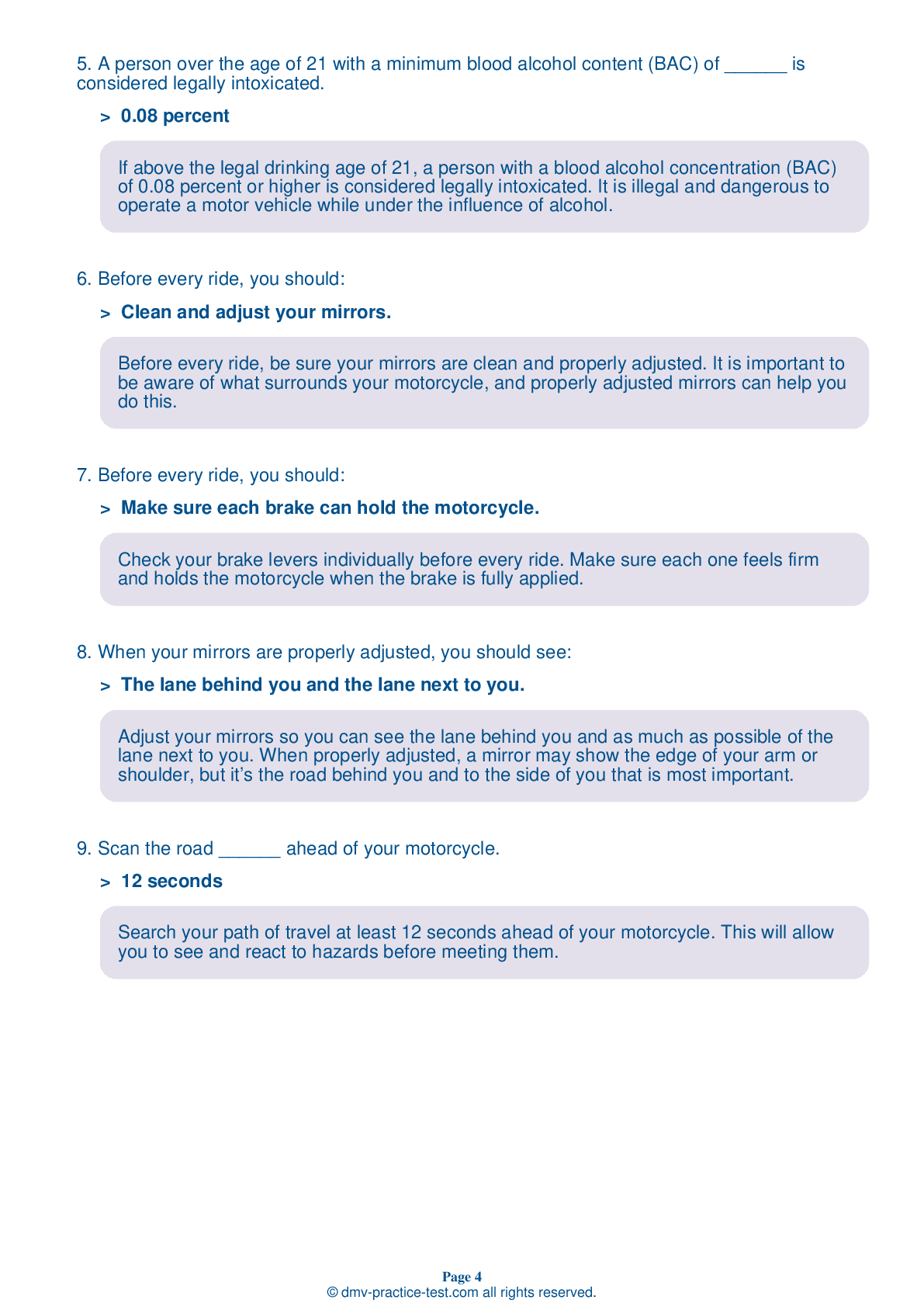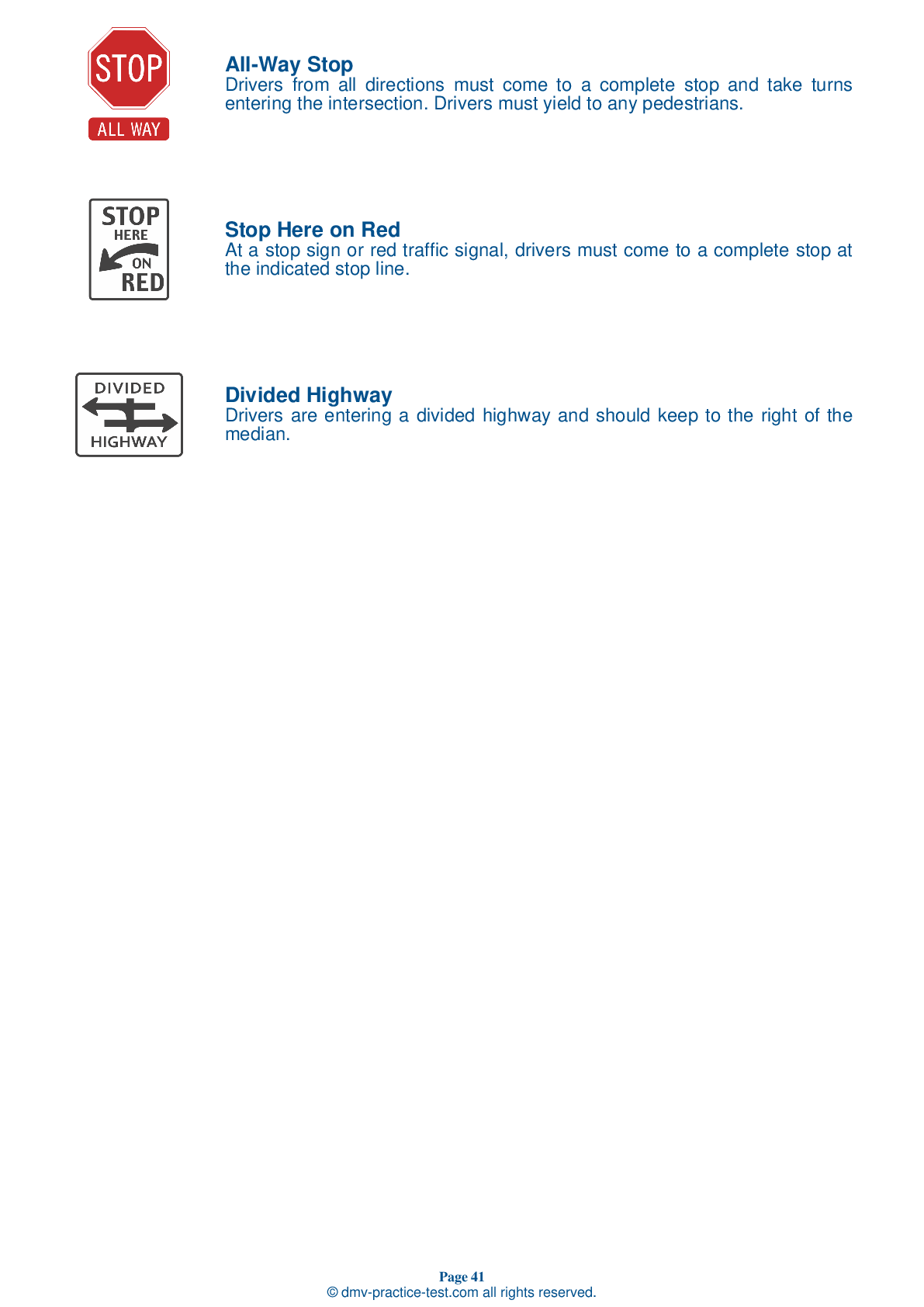Motorcycle Test | License CT 2025 | FREE Online Practice! #1 Page 2 of 3
Take this FREE motorcycle test (license in CT 2025) to check your knowledge of the road rules. To improve your results, download a motorcycle handbook online, study theory, and practice for free on our website. Still worried about how to get a motorcycle license in Connecticut in 2025? Check our website for more sample tests, train as much as possible, and boost your grades!
7 . A motorcycle is not as wide as a car:
Despite their small size, motorcycles still need a full lane width to operate safely. Lane sharing is generally prohibited.
8 . The Motorcycle Safety Foundation recommends a SEE strategy to make safe judgments while riding. What does "SEE" stand for?
Experienced riders use a SEE strategy while riding to make safe judgements. "SEE" stands for Search, Evaluate, and Execute.
9 . What is a major effect of alcohol on the body?
Alcohol is a depressant that slows and impairs bodily functions, both mental and physical. Impairment begins after just one drink.
10 . When riding at night, a motorcyclist should:
Riding at night can be dangerous because a rider’s ability to see and be seen by fellow motor vehicle operators is limited. It is recommended that riders adjust their riding behavior to compensate for this limited visibility by reducing their speed, maximizing their headlight usage, and increasing their following distance.
See the exact questions that will be on the 2025 Connecticut DMV exam.
99.2% of people who use the cheat sheet pass the FIRST TIME
Jeneen was tired of paying $5/gallon. She got herself a scooter that required the motorcycle license. She studyed the motorcycle test cheat sheet and passed her test the next day!
Christopher tells us how he knew nothing prior to obtaining the motorcycle study guide, and he only got one question wrong because he clicked on the wrong answer by mistake.
